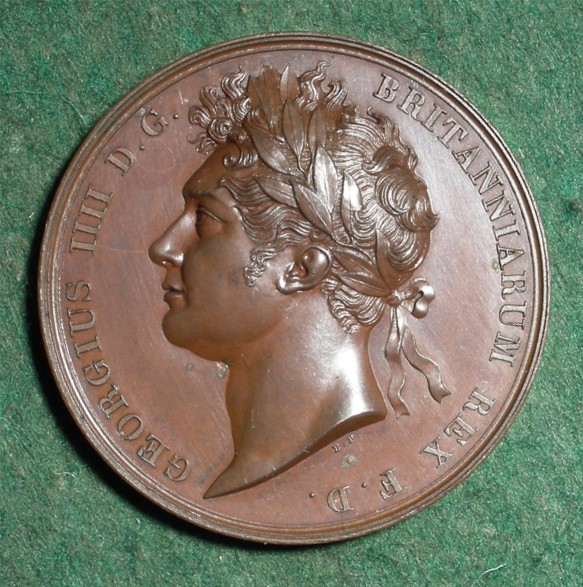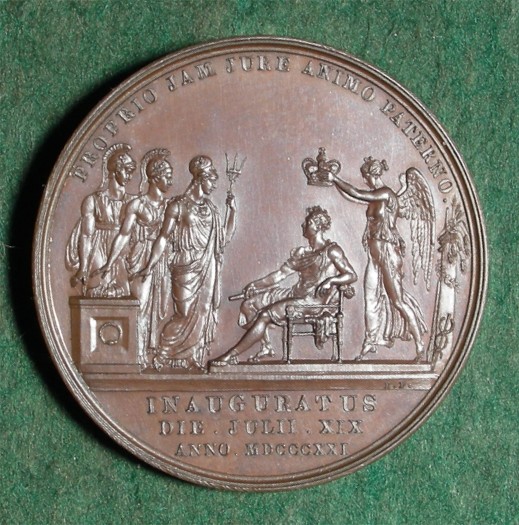

Historical and Commemorative
Medals
Collection of Benjamin Weiss
|
GEORGE IV CORONATION PISTRUCCI, Benedetto: England, 1821, Bronze, 35 mm
George Augustus Frederick (1762-1830), king of Great Britain and Ireland (1820-1830), was the eldest son of George III. As a child he was naturally gifted and was well taught in the classics, leaning to speak French, Italian and German fluently. He had considerable taste for music and the arts, which he encouraged when he became king, having built the Royal Pavilion, Brighton, and being largely instrumental in the foundation of the National Gallery, London and King's College. George had a poor relationship with his father, openly opposing him and supporting the Whig leader Charles Fox. He also created a scandal when he contracted a secret, illegal marriage to a Roman Catholic widow, later marring his cousin, Caroline of Brunswick, then trying to divorce her. He even forbade Caroline to attend his coronation. Before his fatherís death in 1820, George Augustus served for nine years as the Prince Regent when George III suffered from a relapse into insanity from an illness that is now suspected to have been porphyria. (Porphyria is a group of genetic disorders caused by abnormalities in the chemical steps leading to the production of heme. Heme, a substance found in the blood and bone marrow, is chemically a porphyrin and is the non-protein component of the oxygen carrying protein hemoglobin.) George IVís reign was noted for stubbornness, self-indulgence and extravagance. Though he ignored most of his constitutional duties, fortunately for Great Britain he left the conduct of the Napoleonic Wars in the capable hands of the Duke of Wellington and Viscount Castlereagh. George IV died in 1830 and was succeeded by his niece Victoria. This is the official coronation medal of George IV. A close copy of this medal by E. Avern was worn by the Buckinghamshire Yeomanry Coronation Horse, which formed the Royal Escort at the coronation ceremony.
|
|